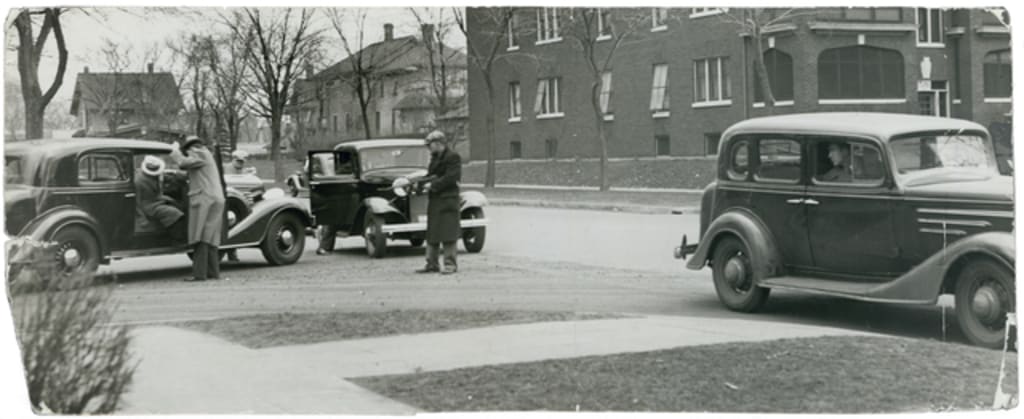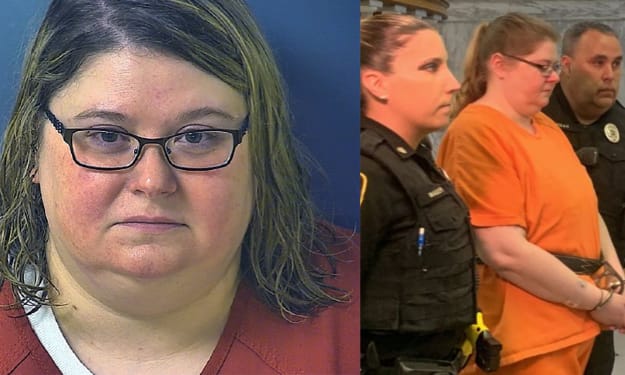The Kidnapping of Edward Bremer (Jan 17 - Feb 7, 1934)
The Commercial State Bank President was abducted shortly after dropping off his daughter at her school

“When Prohibition was repealed and liquor was legal, (gangsters) switched from bootlegging to kidnapping.” ~ Paul Maccabee (author)
Commercial State Bank President Edward Bremer’s high profile and structured timeliness were two keys to his success. The heir to the Schmidt Brewery fortune was a man to which you could set your watch. Those assets benefited him immensely, both personally and financially.
Unfortunately, they were also the reason behind the worst three weeks of his life.
The December 1933 ratification of the 21st Amendment dried up the illegal alcohol trade, ending an income source for the criminal underworld which needed to be replaced. Hoping to make large amounts of money quickly without the risks associated with robbing banks, the Barker-Karpis Gang turned to high profile kidnapping. They’d been mostly successful six months prior with the kidnapping of William Hamm Jr.
They felt Bremer was the perfect target for trying again.
However, there was a fair share of concern among gang members during the planning process. Alvin Karpis, one of the gang’s leaders, told Harry Sawyer, the man who organized the kidnapping, that he would rather rob a bank than abduct Bremer. Karpis was concerned about the possibility of significant public backlash. In the end, the chance for a big payday was too great to pass up.
On a frigid January 17, 1934, morning at around 8:25 AM, Bremer, having just dropped his daughter Betty off at school, was on his way to work. Only blocks away on the corner of Lexington and Goodrich, he was ambushed and abducted. Later identified as the Barker-Karpis Gang, Bremer’s kidnappers had followed him for a short time to learn his morning routine.
Once the gang had taken Bremer, they made a phone call to his trusted business associate and former chauffeur Walter Magee to demand a ransom. The message was simple; they had “snatched” Bremer and wanted two-hundred-thousand dollars for his safe return. Someone associated with the gang left a ransom note with similar demands in the back office of Magee’s house. The written message had instructions leading to Bremer’s abandoned car.
Just like the Hamm Jr. kidnapping the previous June, there were requirements for how the family was to pay the ransom. No new or consecutive money, and a large variety of issues. Magee was then to place the money in two suit box cartons large enough to hold every bill. The note closed by offering some reassurances that if the family did their part to see Bremer returned safely, the gang assured them they would do theirs.
When the Bremer family was ready to make the ransom payment, the kidnappers required them to place an ad in the “personals” section of the Minneapolis Tribune. It needed to say, “We Are Ready, Alice.” One concern in the local field agents representing the FBI was with the local police’s overzealous nature. The agents were looking to find out the pay-off man’s identity and have him lead them back to the other kidnappers. The local law enforcement wanted to kill him.
Bremer’s father was friends with President Franklin Delano Roosevelt, and having this happen six months after Hamm's kidnapping in the same city was too much to bear. At the same time, the nation still mourned the loss of Charles Lindbergh’s baby. FDR told FBI boss J. Edgar Hoover he needed to fix the gangster problem.
There was pressure on the Bureau to solve this case quickly. The president, newspapers throughout the country, politicians, and other prominent citizens all looked to Hoover for answers. Despite the gang’s insistence the police not get involved, everyone wanted to help. Minnesota Governor Floyd B. Olson called the Bremer family to offer every law enforcement agency’s support in the state. Gang member Fred Barker suggested they kill Bremer in retaliation, but was overruled.
After twenty-two uncomfortable days and one misguided attempt to renegotiate the amount with their son’s captors, the Bremer family paid the ransom — against J. Edgar Hoover and the FBI’s wishes.
Adolph Bremer, Edward’s father, wrote a note to be delivered along with the money, “To the parties holding Edward: I’ve done my part and kept my word 100 percent just as I said I would. This money is not marked and is the full amount asked for. And now, boys, I am counting on your honor. Be sports and do the square thing by turning Edward loose at once. (Signed) Adolf Bremer.”
The kidnappers did the “square thing,” and Edward was dropped off between the Minnesota cities of Rochester and Chatfield along Highway 52 around 8 PM on February 7, 1934. The gang told him to take a bus back to St. Paul. Upon returning home, Bremer didn’t have much information to give to the FBI. He told them he was in a sedan with three men and that he had spent a significant amount of time blind-folded while riding in the car. The gang told Bremer that if he were to talk, they would kill his daughter. He wasn’t willing to offer much, if any, information about his captors.
While the gangsters did end up getting the money, things did not end well. Now that Bremer was back home after being held, everyone was ready to take the fight to the gangster problem.
The national focus given to the abduction, and the fact that it happened less than a year after Hamm's kidnapping, gave the FBI the ammunition it needed to end the threat of gangsters. This would be the last crime of the Barker-Karpis Gang. Within two years of the Bremer kidnapping, the era of the ‘Public Enemies’ was essentially wiped out.
Despite the previous warnings, Bremer was a great help to the FBI in finding his captors. He made an effort to remember every detail he could, including the wallpaper style used in the house he was held in, allowing authorities to tie the gang to the crime. Many believe that Bremer’s change-of-heart was possibly due to the Bureau’s belief his family’s alleged criminal behavior had something to do with his kidnapping. If he didn’t cooperate, the FBI threatened to go public with the information they had.
Gang member Karpis, for his part, was not a fan of their prisoner. Retelling the story after his arrest for taking part in the kidnapping, he noted Bremer wasn’t exactly the greatest person to spend a kidnapping with, describing him as a “demanding, cranky prisoner who informed the gang not to expect much of a ransom.”
Sources
- “Barker/Karpis Gang.” Federal Bureau of Investigation. Last modified May 18, 2016. https://www.fbi.gov/history/famous-cases/barker-karpis-gang.
- Burrough, Bryan. Public Enemies: America’s Greatest Crime Wave and the Birth of the FBI, 1933–34. London: Penguin, 2009.
- Farris, David. “The Bremer Kidnapping.” Edmond Life & Leisure. https://edmondlifeandleisure.com/the-bremer-kidnapping-p13433-76.htm.
- Maccabee, Paul. John Dillinger Slept Here: A Crooks’ Tour of Crime and Corruption in St Paul, 1920–1936. Minnesota Historical Society Press, 2014.
- Wurzer, Cathy. “Inside the 1934 Bremer Kidnapping.” MPR News. Last modified January 17, 2014. https://www.mprnews.org/story/2014/01/17/bremer-kidnapping-barker-karpis-gang.






Comments
There are no comments for this story
Be the first to respond and start the conversation.